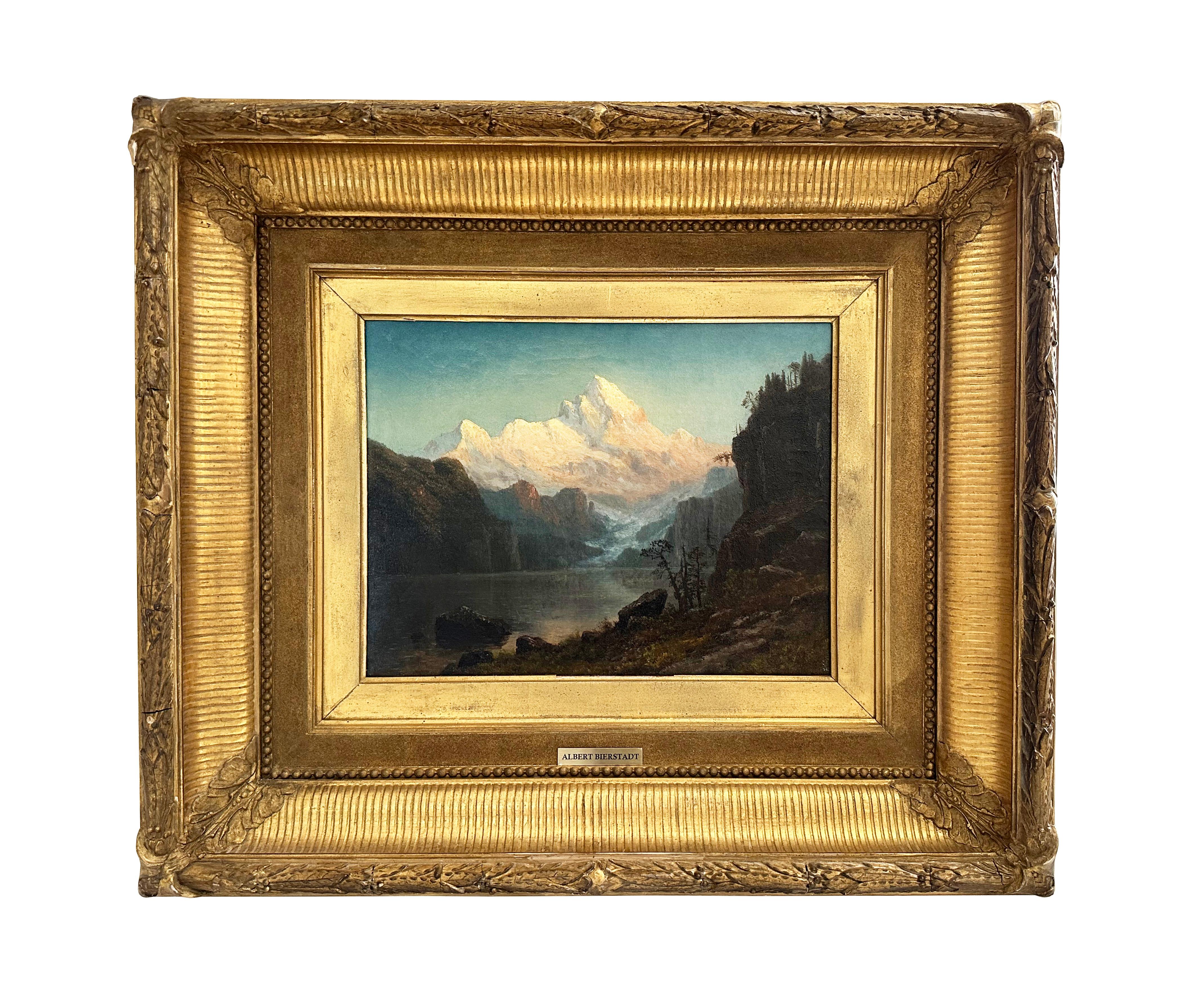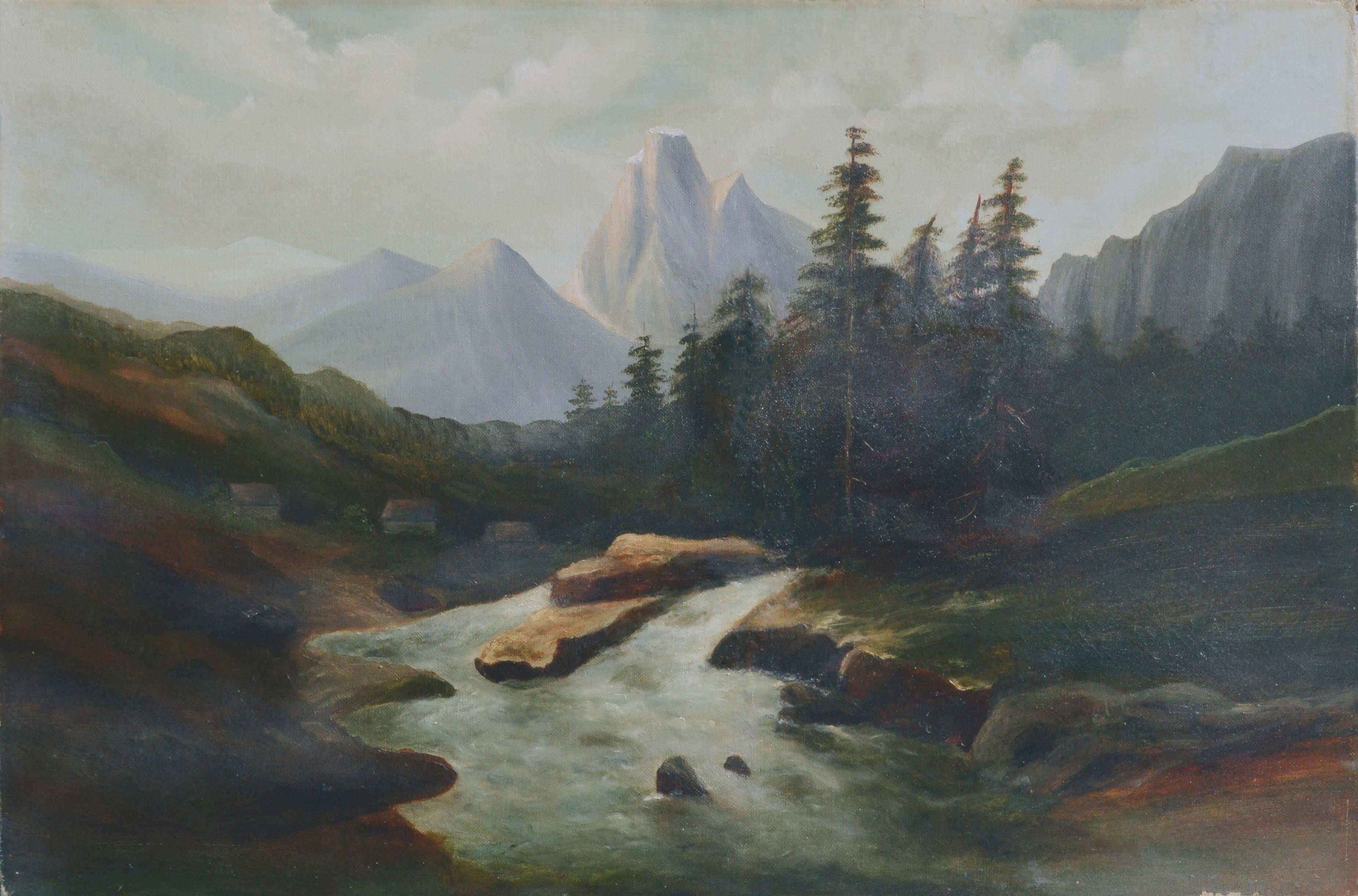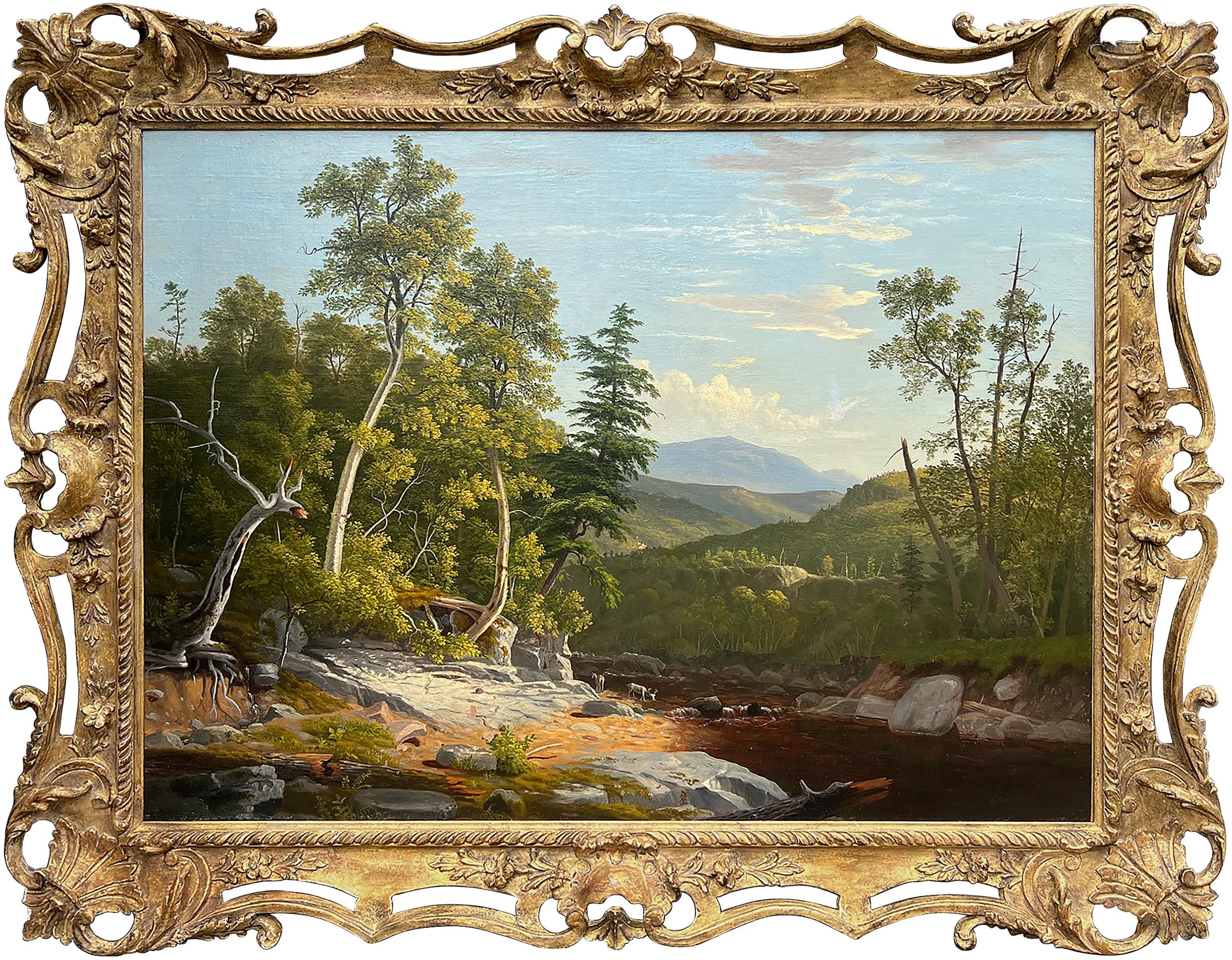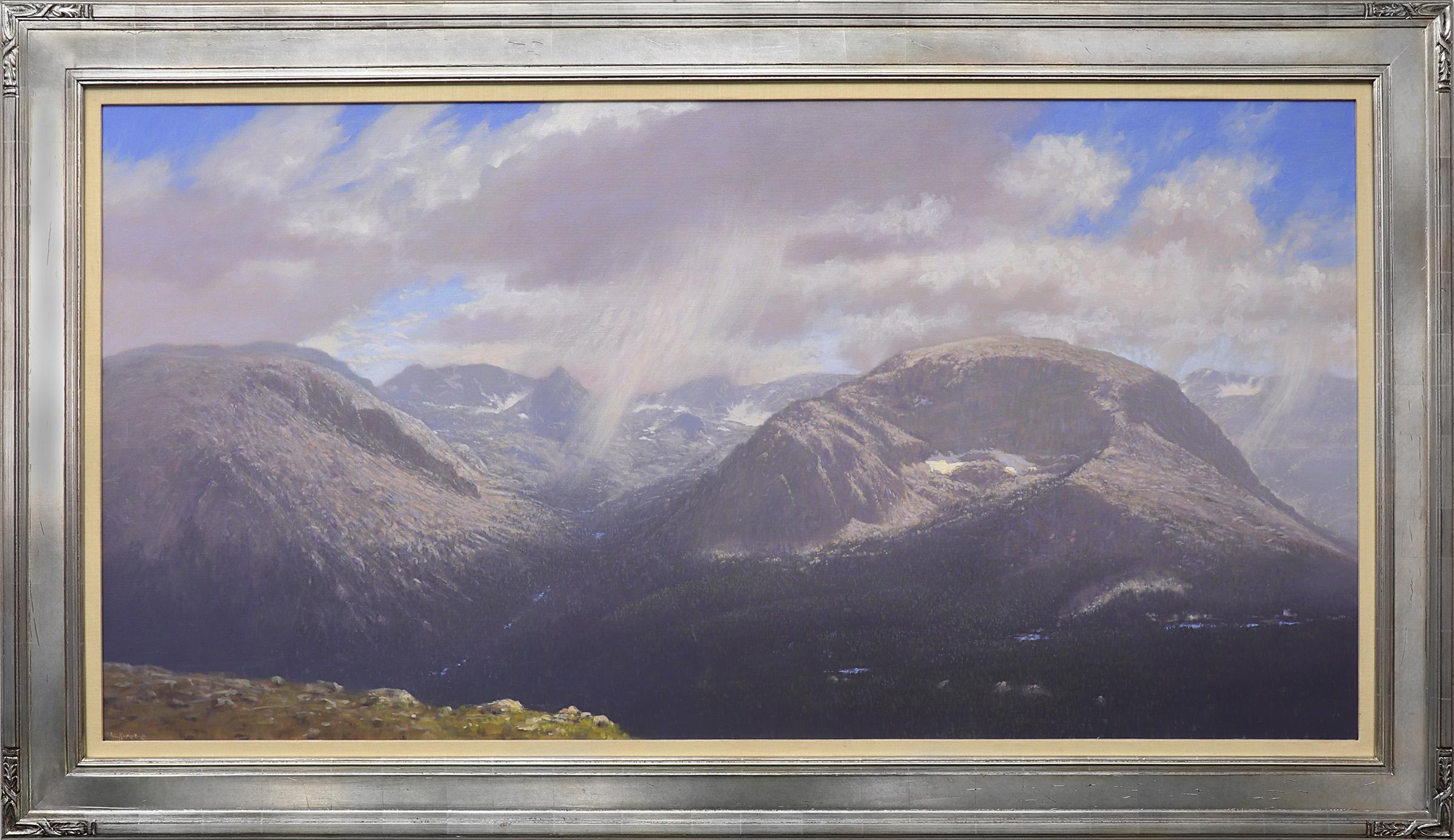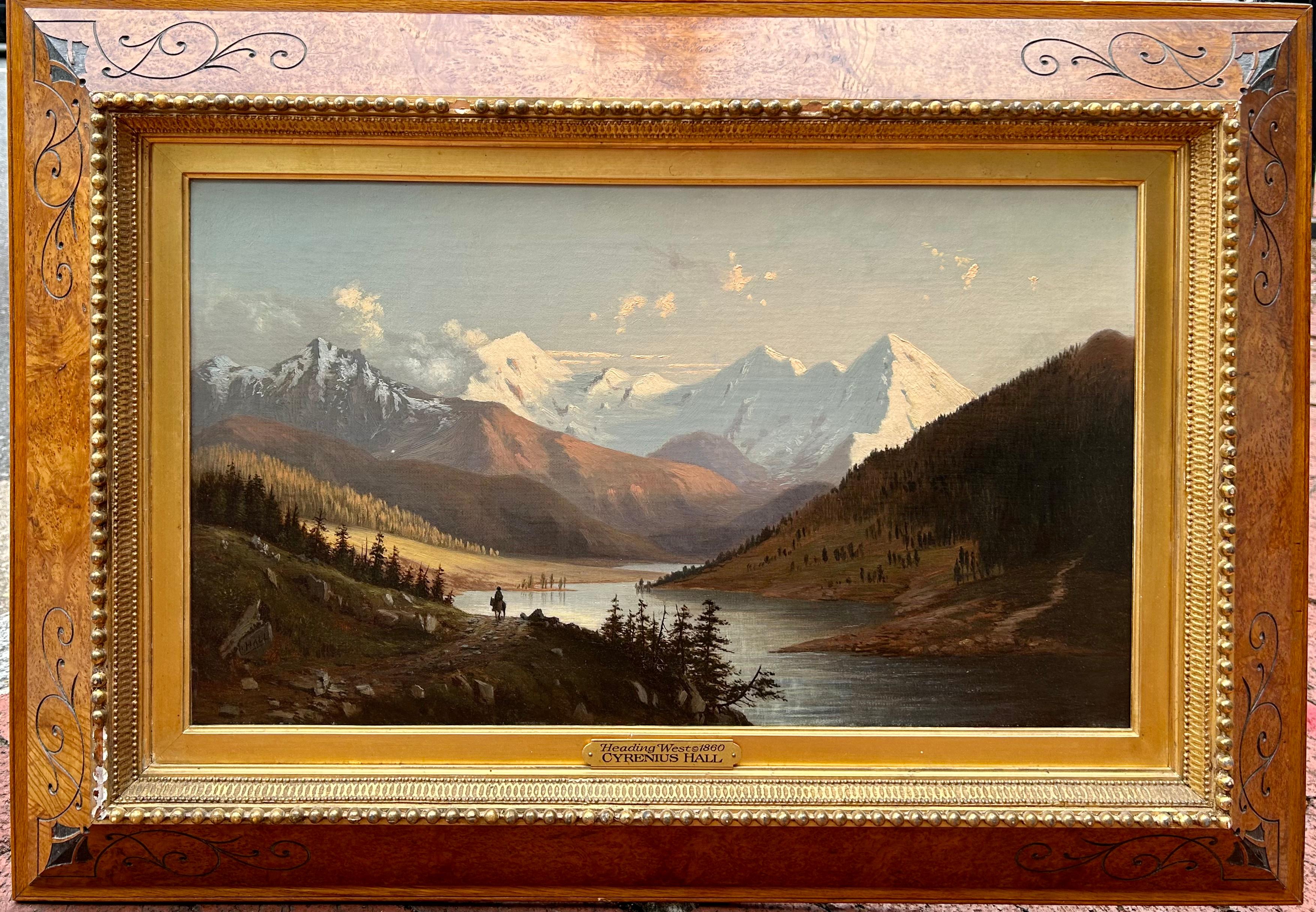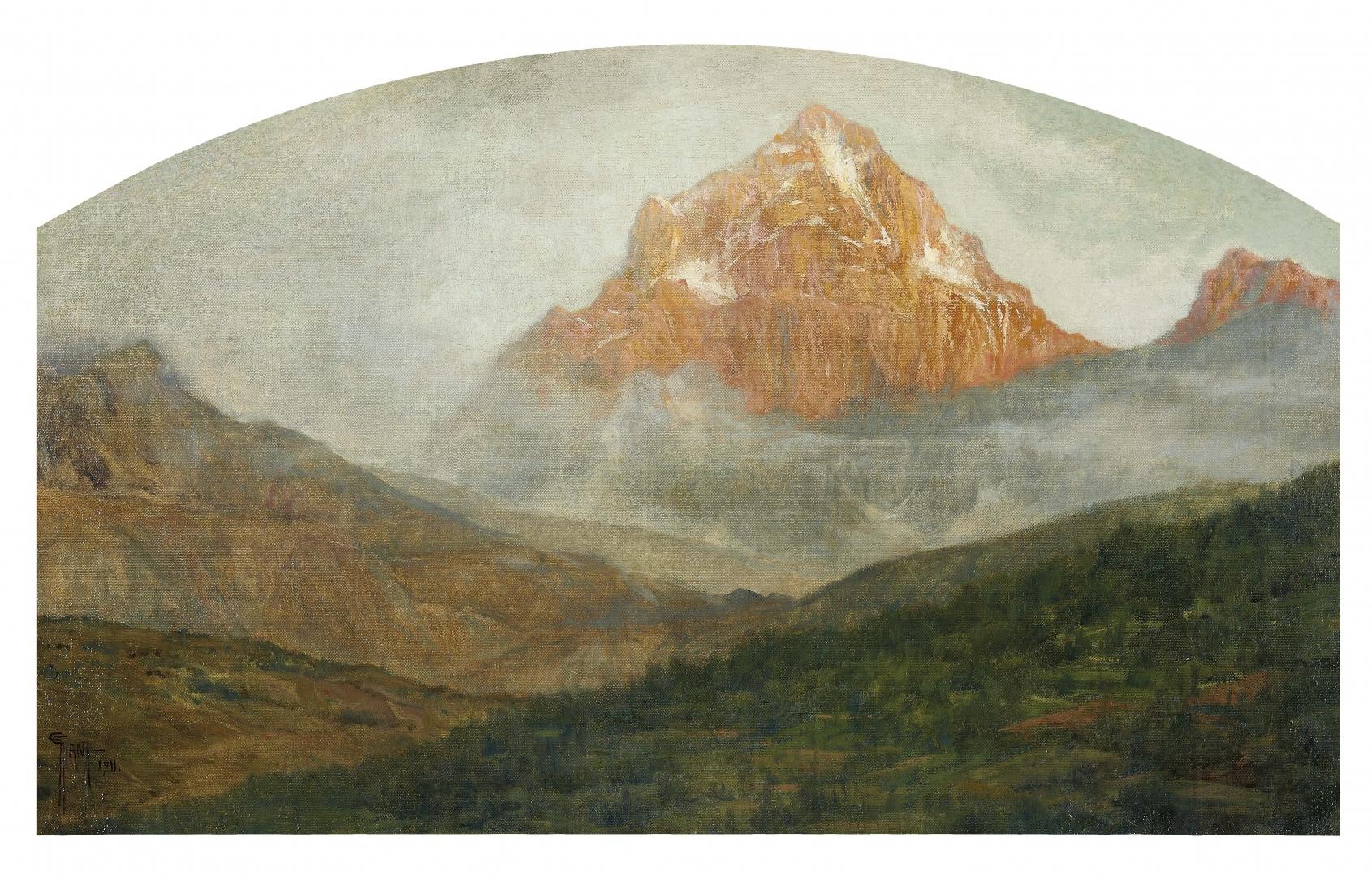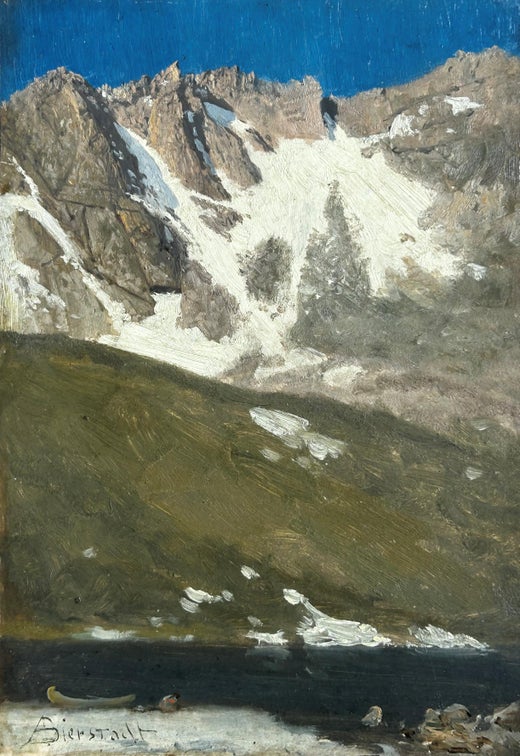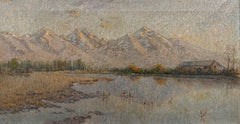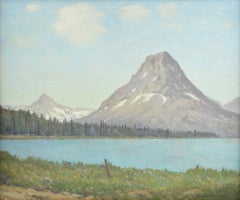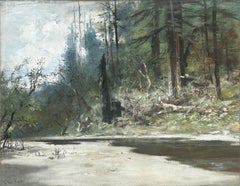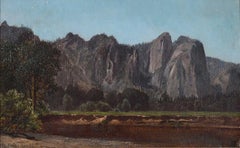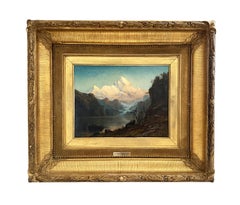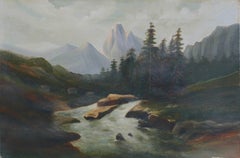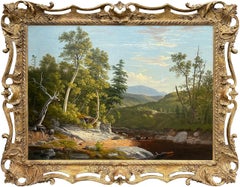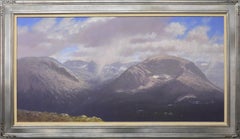Albert Bierstadt
Mt. Rosalie, Colorado, circa 1863
Signed lower left: ABierstadt; inscribed on verso: Mt. Rosalie / Colorado
Oil on paper
13 1/4 x 9 1/2 inches
Provenance
Private Collection, New York
This work is included in the database for the Albert Bierstadt Catalogue Raisonné Project and is accompanied by a letter of opinion from Melissa Webster Speidel, President of the Bierstadt Foundation and Director of the Albert Bierstadt Catalogue Raisonné Project.
Likely the most famous and financially successful late 19th-century painter of the American western landscape, Albert Bierstadt created grandiose, dramatic scenes of the Rocky Mountains and Sierra Nevadas that lured many people to visit those sites. He was also one of the first artists to use a camera to record landscape views. His oil paintings, many of them huge, were the ultimate expression of the popular 19th-century Romanticism. But his reputation diminished when public taste in art changed dramatically and replaced Realism and Romanticism with Impressionism and when transcontinental railway travel revealed that the West looked nothing like his idealized paintings. Bierstadt was born in Solingen, near Dusseldorf, Germany, and sailed as a baby with his family who settled in New Bedford, Massachusetts. Unlike many of his successful peers, as a child, he showed only casual interest in and talent for art, and he had little encouragement from his family. In New Bedford, he acquired a few collectors of his early work including a Mrs. Hathaway from a local shipping family. At a New Bedford Concert Hall, he also used the floral images of George Harvey (1800-1878) for a scenery picture shows with a Drummond Light, a lantern that allowed one picture to fade into another. In 1853, he returned to Dusseldorf where he studied at the Royal Academy with landscape painters Andreas Aschenbach and Karl Friedman Lessing. Some of his fellow students were Emmanuel Leutze, Sanford Gifford and Worthington Whittredge, and they all learned much attention to detail, respect for composition and skilled drawing.
During this period, he traveled extensively in Europe, especially Italy, and companions were Whittredge and Gifford. He completed many picturesque Old World scenes in the style that later became his trademark. In 1857, he returned to the United States and painted the White Mountains of New Hampshire, and in 1858, exhibited for the first time at the National Academy of Design in New York. His fourteen entries included, Lake Lucerne, which was one of the biggest in the exhibition. That same year, representatives of the Boston Atheneum, purchased his painting, The Portico of Octavia, Rome, for $400.00 and this was the first museum purchase acquisition of his work. In January 1859, he heard a lecture in New Bedford on the American West by Bayard Taylor, famous traveler and lecturer, and this exposure stirred an interest that played a large part in
his future career. Meanwhile, he had settled into New York City where he lived and occupied a studio in the Tenth Street Building, which had 25 studio spaces and became well known for its prestigious occupants. He remained in this studio space until 1881, when he moved to 1271 Broadway to the Rensselaier Building. A year later he found the subject matter that set the course of his career. He joined a western military expedition led by Colonel Frederick W. Lander to survey wagon routes in the Rocky Mountains and Wyoming. From sketches and artifacts such as buffalo hides and Indian items, he painted studio western scenes including landscapes, Indians, and wildlife in the traditional style he had learned in Europe. His first big western painting, 1860, had several titles: The Base of the Rocky Mountains, Laramie Peak and/or The Rocky Mountains. (It should not be confused with the 1863 painting, The Rocky Mountains, now in the Metropolitan Museum.) The 1860 painting did not generated much reaction when it was exhibited at the National Academy nor did it find a buyer, but it did establish "its creator, however, as the artistic spokesman of the American Far West" . . . (Hendricks 94) Subsequently the painting was lost, having been loaned to a Buffalo New York high school in 1922.
In 1861, Bierstadt and his friend from Dusseldorf, Emanuel Leutze, got permission to visit army camps around Washington to paint Civil War scenes, and from this experience plus an 1863 visit to Fort Sumter, Bierstadt painted war theme canvases including The Bombardment of Fort Sumter. During this period, he also visited the White Mountains of New Hampshire, and made plans for a second visit to the American West, which involved securing welcomes at U.S. army forts by getting travel permission from Charles Sumner, Secretary of War. This second trip West was with his friend, Fitz Hugh Ludlow, whose wife Rosalie Osborne, Bierstadt would subsequently marry in circumstances that 'titilated' New York society. Ludlow was the son of a Presbyterian absolutist minister of Poughkeepsie, New York, and was a writer of a controversial but best-selling book, The Hasheesh Eater. The publication was praising of hashish and described his positive experiences of being one of the first westerners to use the drug, which had been used in India and other countries for over a thousand years but was first introduced in 1839 in America. As a result of notoriety for the book, by the mid 1850s, he was highly prominent in New York society. He was married to Rosalie Osborne of wealthy family of Waterville, New York, It has been suggested that Rosalie and Bierstadt were showing interest in each other at the time of the 1863 western trip of the two men.
